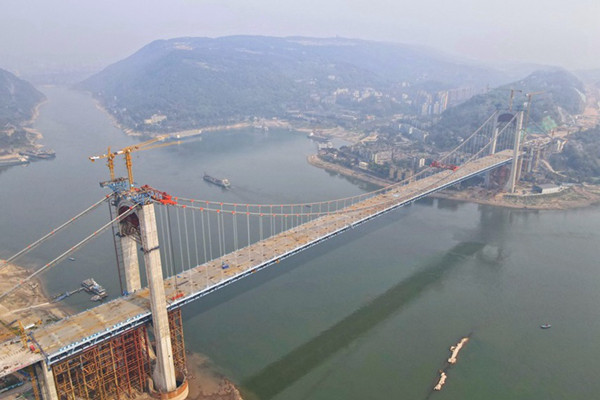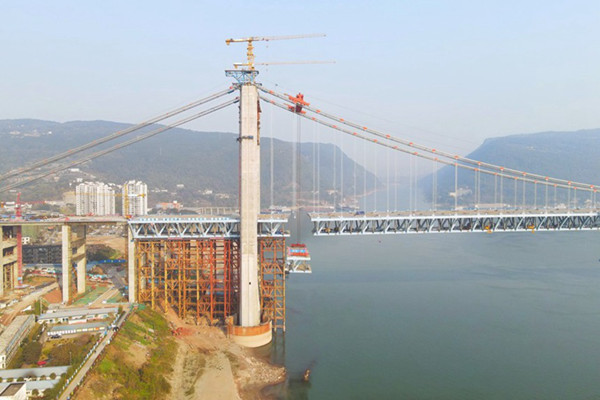The Chongqing Guojiatuo Yangtze River Bridge in Southwest China's Chongqing Municipality was connected as the last steel truss was hoisted on March 15. The bridge is expected to open for traffic in October.

A bird's-eye view of the construction site of the Guojiatuo Yangtze River Bridge in Chongqing Municipality [Photo provided to sasac.gov.cn]
A key section of Chongqing's six north-to-south highways crossing the Yangtze River, the 6.2-kilometer project starts from Guojiatuo in the North and ends in Xiakou Town in the South. As the main part of the project, the Guojiatuo Yangtze River Bridge covers 1,403.8 meters and has a 720-meter-spanning highway-railway dual-use steel truss girder suspension bridge, which is the longest of its kind in China.

The last steel truss girder of the Guojiatuo Yangtze River Bridge is hoisted on March 15. [Photo provided to sasac.gov.cn]
According to Wu Baochu, the project manager, the total length of the steel truss structure of the main bridge is 862.5 meters and is separated into 58 parts, which are connected with 578 rod pieces and 530,000 high-strength bolts.
Wu mentioned that the first steel truss girder hoisted was 20.5 meters long, 39 meters wide and 12.7 meters high and weighs 661.5 metric tons, which is the heaviest single steel truss girder of its kind among those used for construction of bridges over the upper reaches of the Yangtze River.
He added that the total weight of the steel truss of the entire Guojiatuo Yangtze River Bridge is about 25,000 tons, equaling that of four Eiffel Towers.

A view of the hoisting of the last steel truss girder of the Guojiatuo Yangtze River Bridge in Chongqing on March 15 [Photo provided to sasac.gov.cn]
Once operational, the bridge is expected to shorten travel time between the two banks of the Yangtze River from 40 to about 10 minutes, which will effectively relieve cross-river traffic pressure and contribute to construction of the Chengdu-Chongqing Economic Circle.
The project is contracted by China State Construction Engineering Corporation.
(Executive editor: Niu Yilin)